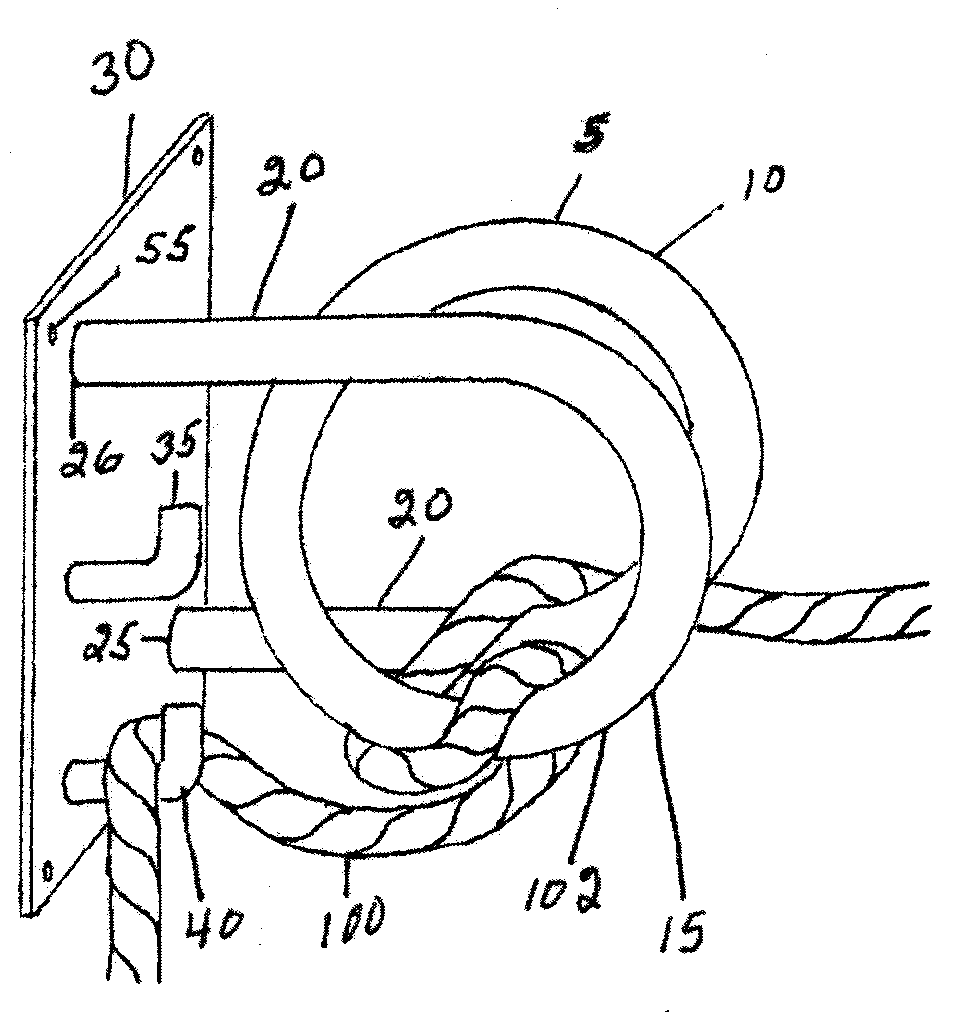Adjustable Rope Tie For Animals And Movable Objects
a technology of adjustable rope and movable objects, which is applied in the direction of fastening devices, ropes and cables for vehicles/pulleys, mechanical equipment, etc., can solve the problems of animal panic, pulling back in panic, and reducing the safety of animals, and needing a certain amount of slack or extra rop
- Summary
- Abstract
- Description
- Claims
- Application Information
AI Technical Summary
Benefits of technology
Problems solved by technology
Method used
Image
Examples
Embodiment Construction
[0028]As shown in FIGS. 1 though 5, a rope tie 1 of the invention comprises a helical coil 5 having a first loop 10 and a second loop 15. End portions 20 of the coil 5 are straightened. Ends 25, 26 of the end portions 20 are welded or otherwise permanently attached to a plate 30. Upper hook 35 and lower hook 40 are also welded or permanently attached to the plate 30 alongside the coil 5.
[0029]The plate 30 is secured to or mounted on a fixed or relatively fixed support 45, as shown dashed lines in FIG. 5. The plate 30 may be secured to the support 45 by screws 50, as shown in FIG. 5, or by any other means of permanent attachment. As shown in FIG. 1, holes 55 may be placed or formed in the plate 30 so that screws, bolts, or other attaching means may be secured to the supporting structure 45 through the holes 55.
[0030]Hooks 35, 40 are bent so they each have vertical portions 60 and 65, respectively, as best shown in FIGS. 2, 4, and 5.
[0031]The coil 5, plate 30, and hooks 35, 40 are mad...
PUM
 Login to View More
Login to View More Abstract
Description
Claims
Application Information
 Login to View More
Login to View More - R&D
- Intellectual Property
- Life Sciences
- Materials
- Tech Scout
- Unparalleled Data Quality
- Higher Quality Content
- 60% Fewer Hallucinations
Browse by: Latest US Patents, China's latest patents, Technical Efficacy Thesaurus, Application Domain, Technology Topic, Popular Technical Reports.
© 2025 PatSnap. All rights reserved.Legal|Privacy policy|Modern Slavery Act Transparency Statement|Sitemap|About US| Contact US: help@patsnap.com



